The fragrant dracaena, or tree of happiness, is an impressive evergreen shrub native to Africa, which flower growers have been growing for many years as a houseplant. Dracaena is an exotic guest from tropical Africa. At home, the plant is grown in order to obtain wood and medicinal leaf extract. In other countries, the flower is grown exclusively for decorative purposes.
Content
The history of growing a tree of happiness and signs
The first botanical description of the plant was presented by Karl Linnaeus in 1767, who in his works relied on the works of the Italian scientist Domenico Wandelli. According to the description of the sailors, in 1942, on the Tenerife island, an old tall tree of an exotic form was noticed, which was considered sacred by the locals, and they worshiped it like a deity. Dracaena was grown at home in the 19th century and since then the plant has not lost its popularity among flower growers.
Several legends are associated with the history of the appearance of the genus dracaena, which explain the name of the plant. According to one legend, the first dracaena grew out of the soil, which was saturated with the blood of a dragon and an elephant as a result of their battle. But in the countries of Latin America it is called the tree of happiness, because, according to one of the legends, dracaena brought good luck and happiness to a young couple of lovers.
It is believed that the tree brings family happiness and love to the house where it grows. For this reason, the plant is perfect for single people who dream of a prosperous family life. There is also an opinion according to which the quality of love relationships can be determined by the growth rate of flower leaves. If the leaves grow steadily and quickly, it means that peace and love reign in the family, and the slowdown in their growth suggests that relations should be worked on.
Fragrant dracaena got its name due to the sweet aroma of its white flowers. According to signs, the flowering of a tree portends financial success or career growth, however, it should be borne in mind that it rarely blooms in home conditions.
View characteristic
Dracaena is a popular decorative culture from the Asparagus family. In the natural habitat, the shrub grows to 6 m in height, when in the room its growth rarely reaches even 2 m. It has a thick erect, stiff, light-brown stalk, from which several branches depart. However, in a plant grown indoors, the stem is quite unstable and requires additional support.
The curved glossy leaves of the shrub are located on the top of its crown alternately, gathering in a socket. The length of a lanceolate rigid leaf plate can reach 60 cm, but its width, as a rule, ranges from 1-10 cm. The leaves of the shrub can have a plain green or two-tone color. White, yellow or dark green longitudinal stripes stand out distinctly on two-color sheet plates. As it grows older, the tree loses its lower leaves, and its trunk is exposed.
In the wild, an adult dracaena boasts annual lush flowering, but you should not expect white-green flowers to appear on a plant that grows indoors.The flowers of the bush exude a pleasant aroma, reminiscent of the smell of freshly cut grass, in whose honor the plant was named. The result of flowering shrubs is the appearance of small round orange fruits.
Features of home growing a tree of happiness
Dracaena is an ideal decorative culture that even a beginner grower or just a lover of indoor plants can easily grow. However, despite all its unpretentiousness, the flower still requires care, if neglected, it is unlikely that it will be possible to grow a healthy and beautiful plant.
Lighting
The plant prefers bright lighting, but can grow in partial shade. It should be borne in mind that variegated dracaena need good lighting more than species with plain leaves. When choosing a place for a flower, it must be borne in mind that burns may appear on the leaves from direct sunlight. For this reason, it is necessary to choose a place with bright but diffused lighting.
Temperature and humidity
Dracaena, as a native of the tropics, loves to grow in conditions of heat and high humidity. In the summer, the flower is best kept at a temperature of 19 to 25 ° C. In winter, the shrub can grow in a cooler room, the air temperature in which should not fall below 10 ° C. However, the plant does not respond well to drafts, which must be taken into account when choosing a place for its placement.
To avoid waterlogging of the plant, the sump can be equipped with drainage, which is usually used expanded clay or pebbles. Dust-covered flower leaves cannot fully breathe, so experienced flower growers recommend periodically removing dust from the plant with a slightly damp soft cloth.
Watering, top dressing, loosening the soil
The tree prefers moderate watering. In summer, it is enough to water the flower 2 times a week, and in winter you can reduce the number of waterings to 1 time in 7 days. However, do not allow deep drying of the soil. As a rule, drying of the upper 2-3 cm of soil indicates that the tree needs watering. Watering the plant can only be well-defended water at room temperature.
The top layer of soil in which the tree grows needs to be loosened periodically. This increases the air permeability of the soil and regulates its moisture, which has a beneficial effect on the state of the root system.
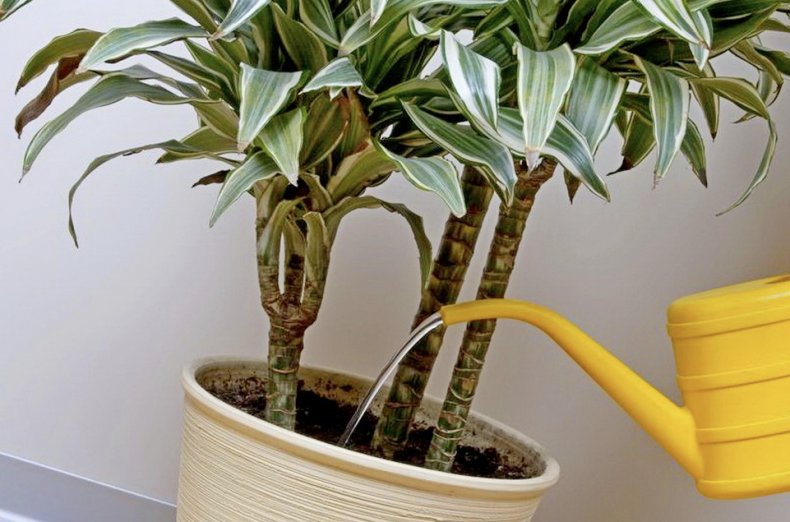
In the period of active growth, which occurs in the warm season, the tree needs additional feeding once every 2 weeks. In winter, the flower does not develop so actively, so fertilizers at this time of the year can be applied only once every 30 days.
It is recommended to use complex fertilizers for palm trees and dracaenas as top dressing, which can be purchased in specialized stores. The main thing is not to feed the flower with fertilizers, which contain a large amount of phosphorus.
Cropping and shaping
Dracaena does not need to be trimmed. Circumcision of the top of the flower is carried out in order to restore its decorativeness. The fact is that the older the plant becomes, the more it becomes similar to a palm tree. The tree stretches upward, and the trunk gradually loses old leaves, in the place of which new ones no longer grow. A bare, leafless trunk spoils the appearance of the flower.
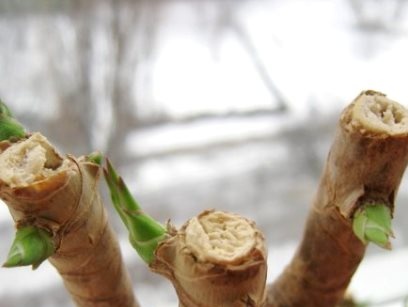
In this case, the top of the tree with 5-7 leaves is cut, leaving only 4 leaves on the trunk, and the place of cut treated with hot wax is covered with a bag of polyethylene.Under the influence of heat, the kidneys will awaken and give life to additional lateral shoots, with the advent of which polyethylene can be removed from the trunk. After such manipulations, the dracaena will become more magnificent and will look more like a bush.
Diseases, pests and methods of dealing with them
Improper plant care can lead to various diseases. For example, in the case of irrigation with poor-quality water, speckled spots appear on the lower sections of the leaf plates. For this reason, it is worthwhile to use exclusively distilled or filtered soft water for irrigation.
An excess of moisture in the soil leads to rotting of the stem, withering and the appearance of moist brown spots on the leaves. The lack of moisture in turn leads to the appearance of dry brown spots on the leaf plates and their withering. You can get rid of the problem only by arranging watering.
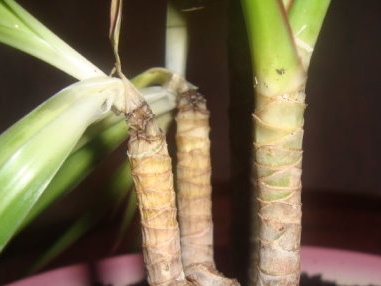
If the plant is kept in a cold room, its leaves become soft, begin to curl, and their tips turn black. In this case, you need to remove the painful leaves with your hands, and move the tree itself to a warmer place.
Dracaena can be affected by a spider mite, aphid, scutellum and thrips. You can cope with them by treating the bush with insecticides. As insecticides, Fitoverm and Actellik can be used.
How to propagate and transplant a flower at home
It is recommended to transplant the plant in early spring. A young flower requires a transplant every 2-3 years, but a mature plant needs to be replanted only after its root system completely fills the pot. In all other cases, it is enough to simply replace the topsoil.
At each flower transplant, the new capacity should be 3-4 cm larger than the previous one. As a soil, you can use a soil mixture of peat, coarse sand, compost, as well as deciduous and sod land, which are taken in equal quantities. You can also purchase ready-made soil for palm trees.
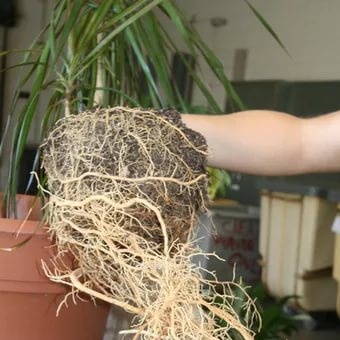
Transplantation Stages:
- Pour hot water over the pot.
- Pour 3-4 cm of drainage layer into the bottom of the pot. Expanded clay, pebbles or small gravel can be used as drainage.
- Remove the flower from the old container and inspect the roots. Rotten roots of the plant must be removed with a sharp blade.
- Place the shrubbery in a new pot along with an old lump of earth.
- Fill the voids of the container with previously prepared soil.
- Gently compact the ground.
- Water the plant abundantly.
The photo will help to visually familiarize yourself with the stages of shrub transplantation.
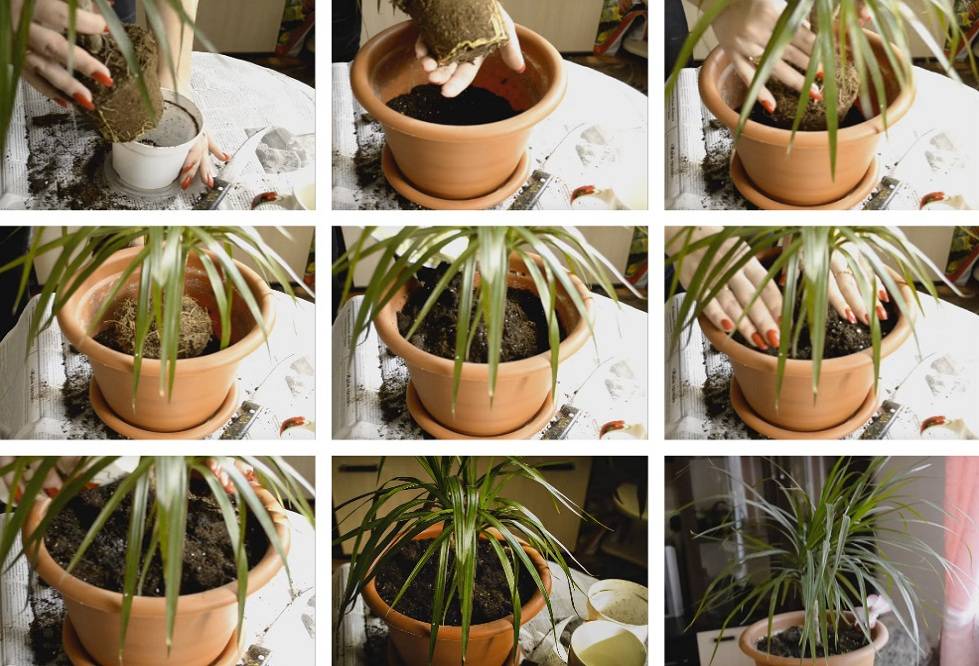
Dracaena, as a rule, is propagated by cuttings, since it is practically impossible to achieve the appearance of seeds by growing a flower indoors. It is best and easiest to propagate the shrub in spring or summer.
The cut top of a tree or stem segments are used as a cuttings. You can root the cuttings in water with the addition of activated carbon or in a mixture of wet sand and peat. Some gardeners process cuttings with phytohormones to speed up the rooting process. The cuttings must be covered with a glass container or plastic bag on top to create greenhouse conditions.
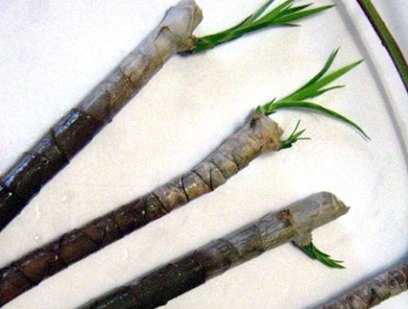
The cuttings, being in greenhouse conditions, acquire their roots within a month. After the roots appear, the stalk can be planted in constant soil.
Common questions
Despite the fact that dracaena are unpretentious indoor plants, some gardeners still encounter difficulties during their cultivation.
The tree of happiness is an evergreen shrub, the exotic appearance of which will be a great addition and decoration of any interior. It is unpretentious to the conditions of detention and does not require much time for care.

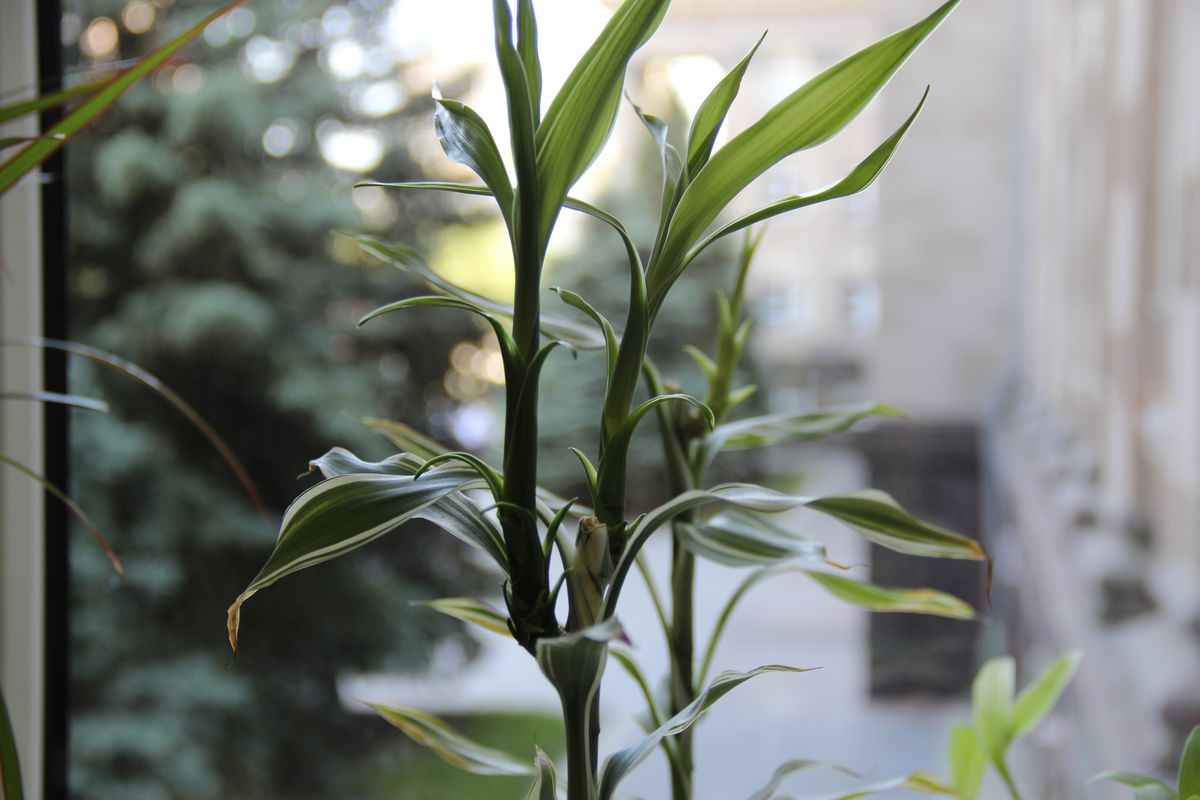
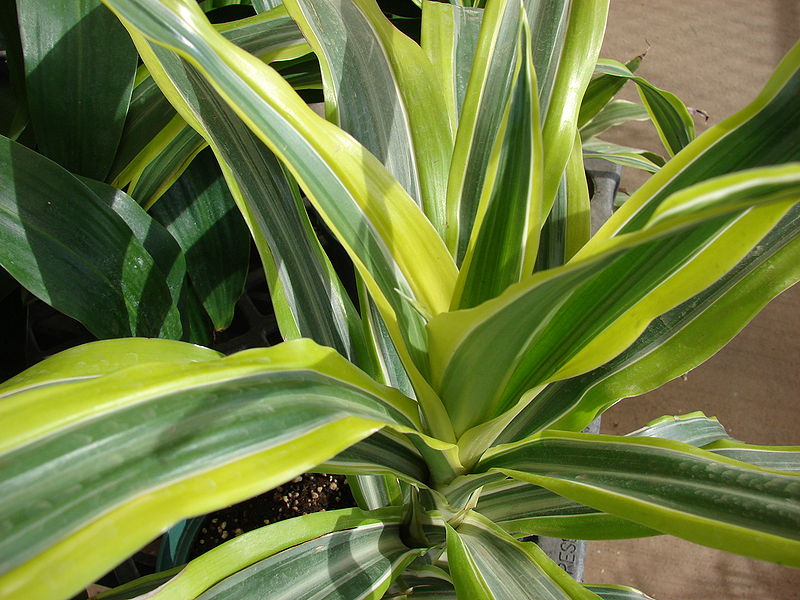
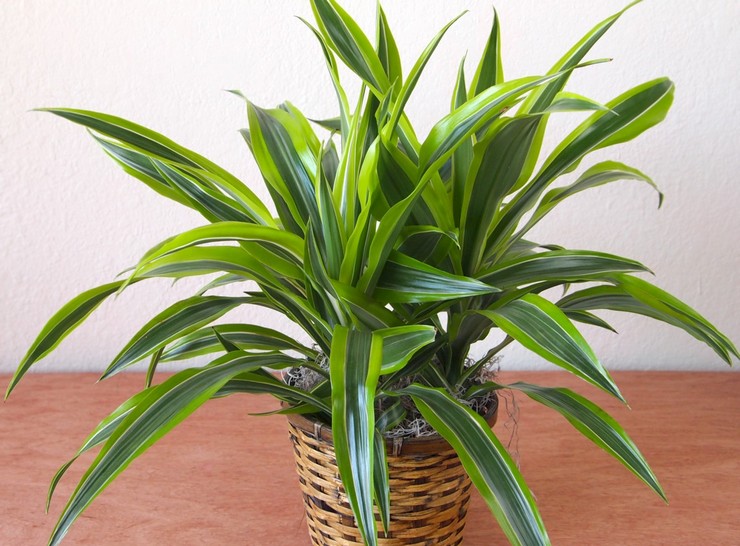
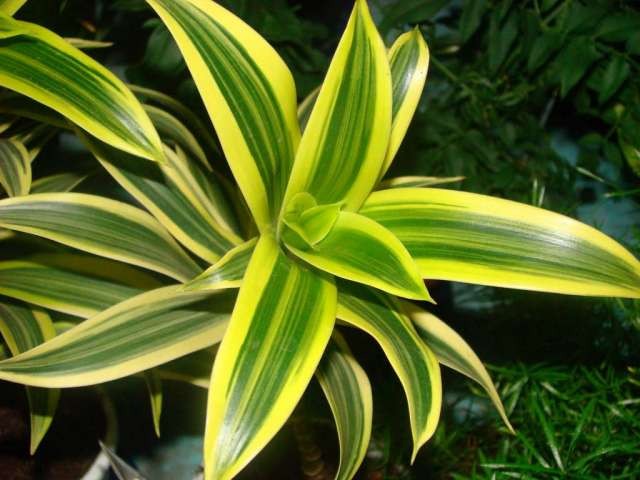
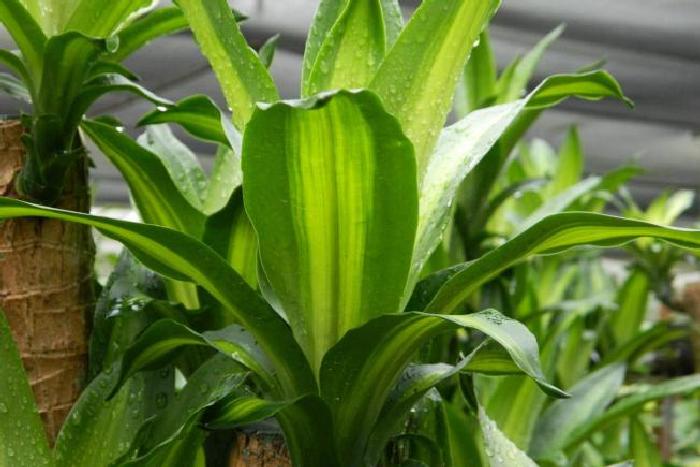
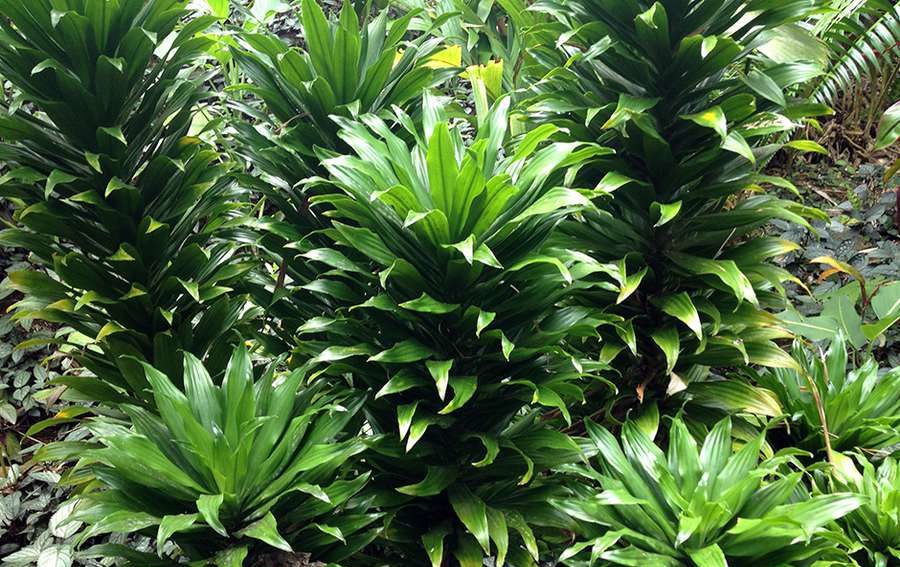
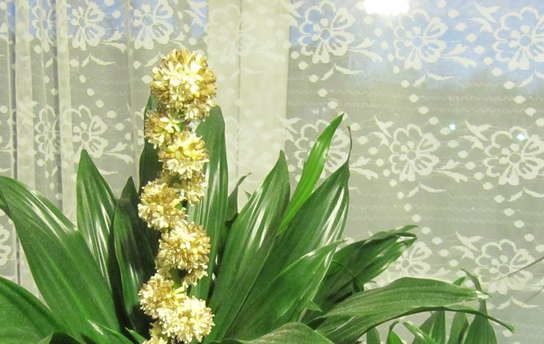



 Sow in the ground, without seedlings: 10 beautiful and unpretentious flowers
Sow in the ground, without seedlings: 10 beautiful and unpretentious flowers Platicodon planting and outdoor care
Platicodon planting and outdoor care Hosta - planting and care in the open ground in the Urals
Hosta - planting and care in the open ground in the Urals Oleander - care and growing at home
Oleander - care and growing at home